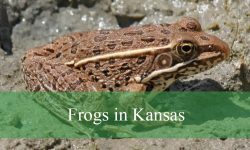Doves and pigeons in Iowa are easy to spot in both cities and rural areas. These birds are often seen perched on rooftops, foraging on the ground, or visiting backyard feeders. With their gentle cooing and calm behavior, they are a favorite among many bird lovers.
Iowa is home to several species of doves and pigeons, ranging from the familiar Mourning Dove to the more urban Rock Pigeon. Some species live here year-round, while others only appear occasionally or during certain seasons. Knowing how to identify them can make birdwatching even more enjoyable.
In this guide, you’ll learn about 6 common doves and pigeons in Iowa. Each section includes clear photos, key features, and interesting facts to help you recognize them quickly in the wild or your own neighborhood.
Types of Doves and Pigeons in Iowa
Mourning Dove (Zenaida macroura)
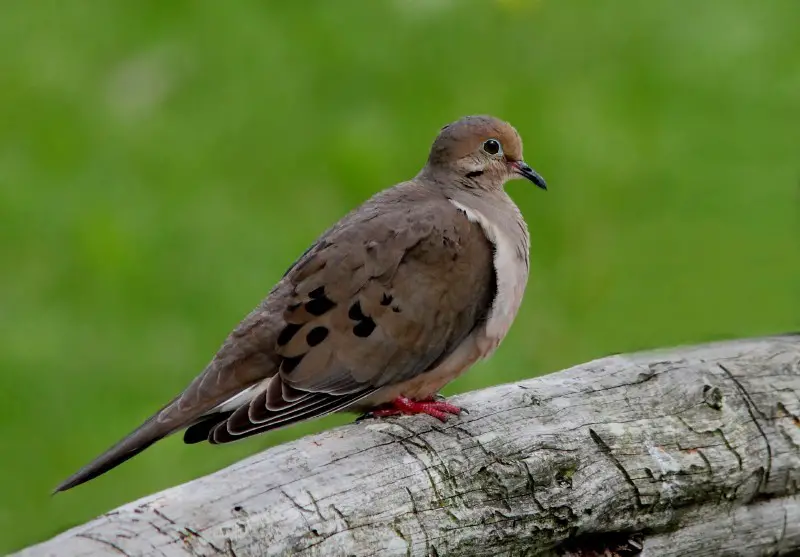
The Mourning Dove is the most common and widespread dove species in Iowa. It has a slender, streamlined body with soft brown-gray plumage, a small head, and a long pointed tail edged with white. Black spots on the wings and a subtle pinkish hue on the chest add to its gentle appearance. Mourning Doves measure around 9 to 13 inches in length with a wingspan of about 17 to 18 inches, making them medium-sized birds. Their distinctive, mournful cooing—often described as a soft “coo-OO-oo, oo, oo”—can be heard frequently in the early morning and late afternoon.
These doves are ground feeders and can often be seen foraging for seeds, grains, and small fruits on lawns, farmlands, and roadsides. They prefer open habitats such as agricultural fields, grassy areas, woodland edges, and suburban yards. Their feeding behavior is quick and nervous, with rapid head-bobbing and sudden takeoffs when startled. Mourning Doves are known for their fast, direct flight and can reach speeds up to 55 mph when escaping predators.
Nesting is simple, often in low shrubs, trees, or even on building ledges. The female typically lays two white eggs in a flimsy nest made of twigs. In Iowa, Mourning Doves begin nesting as early as March and may raise multiple broods throughout the warm months. They are a favorite at backyard bird feeders, especially those offering cracked corn, millet, or sunflower seeds on platform feeders or scattered on the ground.
Mourning Doves are year-round residents throughout Iowa. They are abundant in both rural and urban environments, and their adaptability to human presence makes them one of the easiest doves to observe in the state. During migration seasons, their numbers increase even more, as northern populations pass through or stop over in Iowa.
Rock Pigeon (Columba livia)
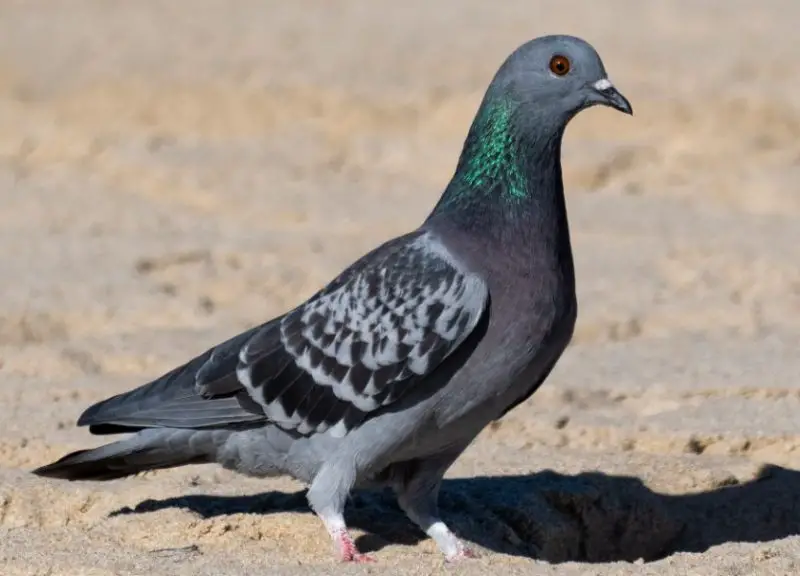
Rock Pigeons, also known as city pigeons or feral pigeons, are common in urban areas across Iowa. These birds have a robust body and broad wings, measuring 11 to 13 inches long with a wingspan of up to 28 inches. Their plumage is highly variable but typically includes bluish-gray feathers, a green and purple iridescent sheen on the neck, and two black bars on the wings. The tail is usually dark-tipped, and their eyes are orange or red. Rock Pigeons are among the oldest domesticated birds and are descendants of wild rock doves native to Europe, North Africa, and Asia.
These pigeons are extremely adaptable and thrive in cities, towns, and even rural grain facilities. You’ll find them roosting and nesting on ledges of buildings, under bridges, in barns, or on water towers. They often gather in flocks, foraging for food scraps, seeds, or grains. Their cooing is deep and repetitive, often sounding like “coo-roo-coo,” especially during courtship or when competing for territory.
Rock Pigeons build messy nests from twigs and debris in sheltered crevices. Breeding can occur year-round, especially in warmer urban areas. A pair typically raises two chicks per clutch and may have multiple broods in a single year. Unlike most other birds, both parents feed their young with “pigeon milk” — a nutrient-rich secretion produced in the crop.
In Iowa, Rock Pigeons are permanent residents and are most common in densely populated urban environments like Des Moines, Cedar Rapids, Davenport, and Sioux City. They are rarely found deep in forests or remote prairies, but wherever people live or farm, these pigeons are likely close by.
Eurasian Collared-Dove (Streptopelia decaocto)
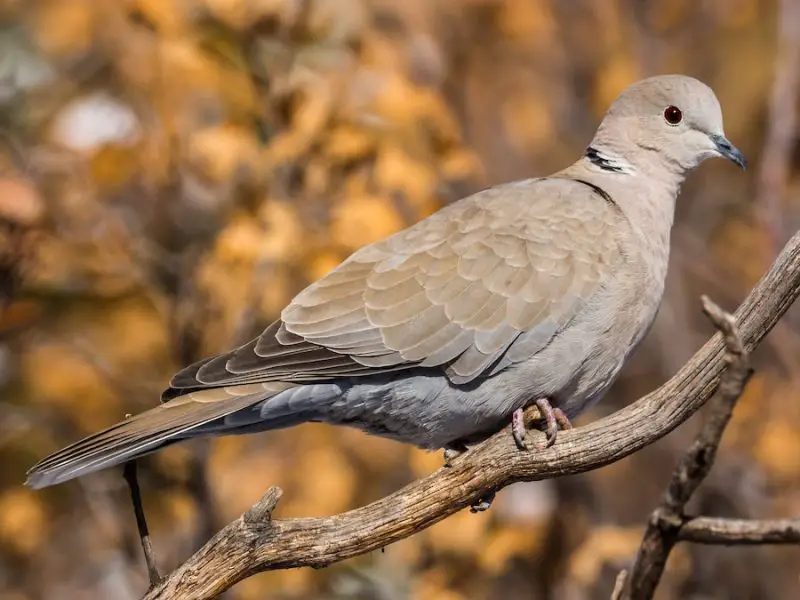
The Eurasian Collared-Dove is a relatively recent arrival to Iowa, having expanded rapidly across North America since the 1980s. This dove is slightly larger than a Mourning Dove, measuring about 12 to 14 inches in length with a broad, squared tail. Its plumage is a pale, sandy gray with a distinctive black crescent “collar” on the back of its neck. The tail is edged in white, and the eyes are dark red with a narrow black bill. These birds are often mistaken for Mourning Doves but are stockier and lack the pointed tail.
Eurasian Collared-Doves have a rhythmic and repetitive call that sounds like “coo-COO-coo,” which is deeper and more mechanical-sounding than the Mourning Dove’s call. They are often heard calling from rooftops, utility poles, or tree branches near human dwellings. During breeding season, males perform flight displays involving steep ascents followed by circular glides.
These doves are attracted to areas near people—especially grain elevators, farms, suburban neighborhoods, and towns. Their diet consists primarily of seeds and grains, and they often visit bird feeders stocked with millet, cracked corn, or sunflower seeds. They forage mostly on the ground and will compete with Mourning Doves at feeders.
Eurasian Collared-Doves are now established in many parts of Iowa, especially in the southern and central regions. Though less common in densely forested areas, they are widespread in rural communities and expanding in number every year. Their adaptability and aggressive behavior have raised some concerns about competition with native dove species.
Band-tailed Pigeon (Patagioenas fasciata)

The Band-tailed Pigeon is a large, robust pigeon primarily found in the western United States, but it is occasionally reported as a rare visitor in Iowa. These birds are larger than Rock Pigeons, measuring up to 16 inches in length with a wingspan of about 26 inches. They are easily recognized by their soft grayish body, purplish breast, yellow bill with a black tip, and a distinct white crescent or collar on the nape. The tail has a broad, pale gray band near the tip, which gives the species its name.
Their call is a low, owl-like hooting—often described as “whoo-oo, whoo-oo”—that is unlike the typical cooing of other pigeons. Band-tailed Pigeons are usually shy and found in forested mountain areas, though rare sightings in Iowa suggest possible vagrants or post-breeding wanderers. They are strong fliers and may travel long distances between feeding and roosting areas.
This species feeds on a wide range of berries, acorns, seeds, and fruits, and may visit backyard feeders offering cracked corn or sunflower seeds during migration. They forage both in trees and on the ground, often in small flocks. Breeding usually occurs in highland coniferous or mixed forests, where they build stick nests high in trees.
In Iowa, the Band-tailed Pigeon is considered a rare or accidental visitor, most likely to be seen during late summer or early fall. Birdwatchers hoping to spot one should watch for individuals that stand out in large flocks of Rock Pigeons or Mourning Doves, particularly in the western or southern parts of the state.
White-winged Dove (Zenaida asiatica)
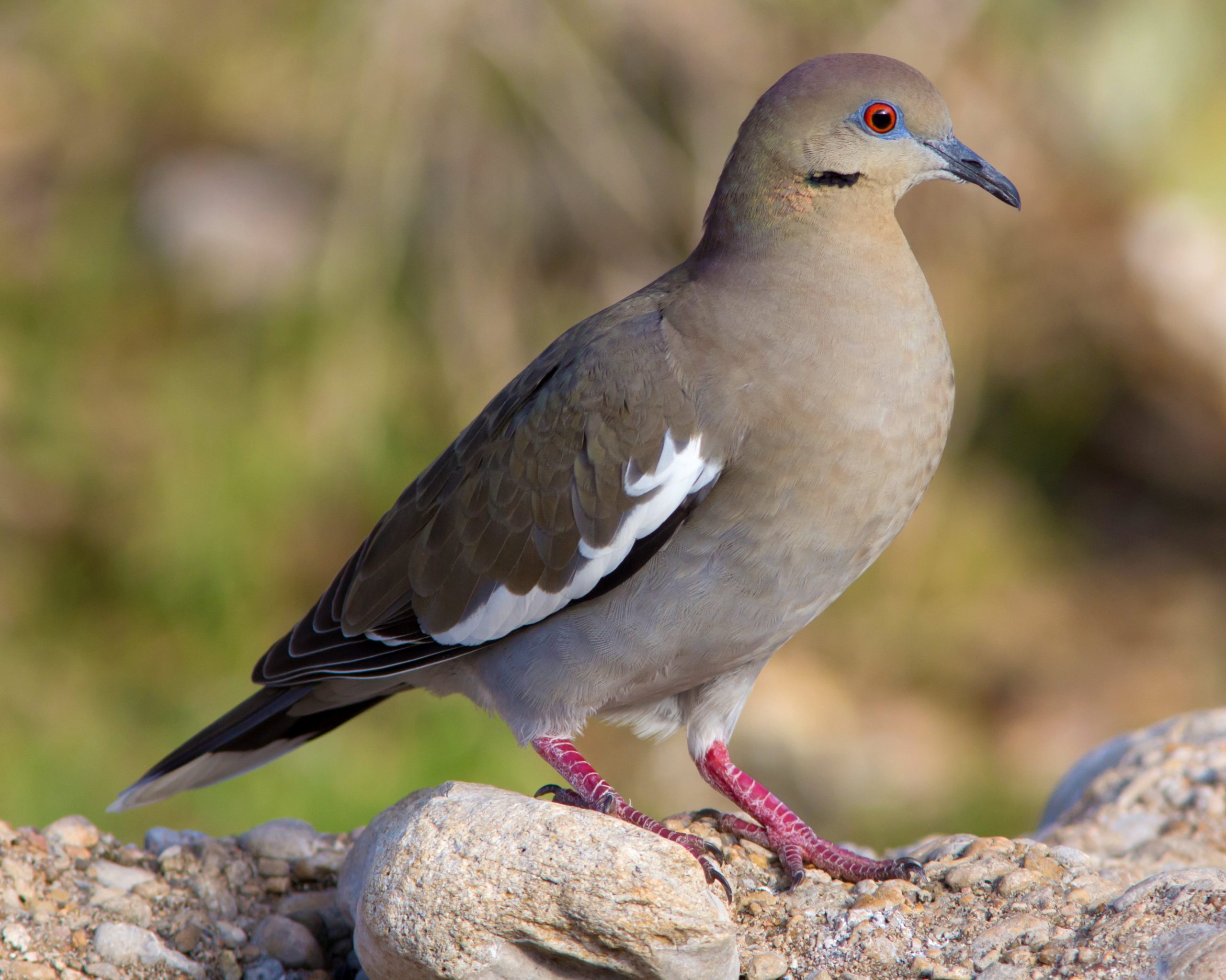
White-winged Doves are medium-sized doves with a striking appearance. They are about 11 inches long and have broad wings with a prominent white stripe visible in flight. Their overall plumage is light brown to grayish-tan, and they feature a bold blue ring around the eyes and dark red irises. Though they are more common in the southwestern United States, a few individuals have been recorded as accidental visitors to Iowa.
Their call is a distinctive “who-cooks-for-you” or “hoo-hoo-hoo-hooo,” which can sometimes resemble an owl’s hoot. White-winged Doves are strong, agile fliers and often perch high in trees or power lines when not feeding. Males are known to display by puffing their chests and bowing repeatedly during courtship.
These doves feed mostly on seeds, grains, and fruits, often foraging on the ground or in low shrubs. They will occasionally visit bird feeders, especially in late summer when natural food sources dwindle. White-winged Doves are especially fond of sunflower seeds and cracked corn and are known to associate with Mourning Doves.
Although not established in Iowa, White-winged Doves are considered rare but increasing vagrants in the state. Sightings are more likely during the summer months, especially in southern Iowa, where expanding populations from Texas and Oklahoma may wander further north.
Passenger Pigeon (Ectopistes migratorius)
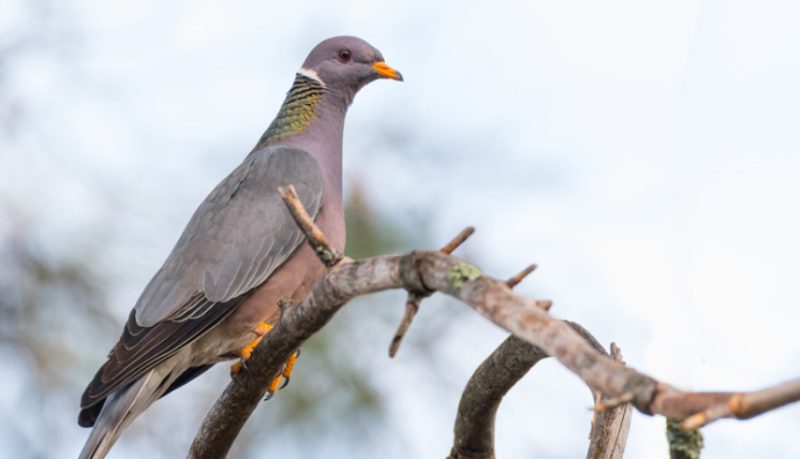
The Passenger Pigeon once filled the skies of Iowa and the eastern United States in enormous flocks, with numbers estimated in the billions. These birds were about 15 to 16 inches long, with long, tapered tails and pointed wings. Males were grayish-blue with a rosy chest and iridescent neck feathers, while females were duller. Their flight was swift and direct, and their wings produced a whistling sound.
Passenger Pigeons made a variety of soft coos and whistles, but their most remarkable feature was their social behavior. They nested and roosted in massive colonies stretching for miles, especially in large deciduous forests. Their diet consisted mostly of acorns, chestnuts, berries, and beech nuts. During migration, they could darken the sky for hours as they passed overhead.
Unfortunately, the species was driven to extinction by the early 20th century due to intense hunting and habitat destruction. Entire flocks were wiped out for food and sport, and the birds’ communal nesting habits made them especially vulnerable. The last known individual, a female named Martha, died in 1914 at the Cincinnati Zoo.
Though extinct, the Passenger Pigeon is an important symbol of conservation awareness. In Iowa, historical records and fossil remains serve as reminders of the incredible abundance this species once represented and the need to protect today’s native bird populations from a similar fate.
FAQ About Doves and Pigeons in Iowa
What is the most common dove in Iowa?
The Mourning Dove is the most common and widespread dove species in Iowa. It can be seen year-round across urban, suburban, and rural areas.
Are Rock Pigeons native to Iowa?
No, Rock Pigeons are not native. They were introduced from Europe and have adapted well to cities and towns throughout Iowa.
Can I feed doves and pigeons in my backyard?
Yes, you can. Doves and pigeons in Iowa enjoy seeds like millet, cracked corn, and sunflower seeds. Use a platform feeder or scatter food on the ground.
Do any rare doves visit Iowa?
Yes. White-winged Doves and Band-tailed Pigeons are considered rare visitors. They are occasionally spotted during summer or migration periods.
Are Eurasian Collared-Doves invasive in Iowa?
Yes, they are a non-native species that have expanded across Iowa. They often compete with native Mourning Doves at feeders and nesting areas.
Where can I see pigeons in Iowa?
You can find pigeons in almost every city across Iowa, especially around buildings, parks, grain silos, and farms. Rock Pigeons are the most common urban species.
What do doves and pigeons sound like?
Mourning Doves have a soft, sad cooing sound. Eurasian Collared-Doves have a repetitive “coo-COO-coo.” Rock Pigeons make a deep “coo-roo-coo.”
Are any species of pigeons in Iowa extinct?
Yes. The Passenger Pigeon, once extremely abundant in Iowa and across North America, is now extinct due to overhunting and habitat loss.






